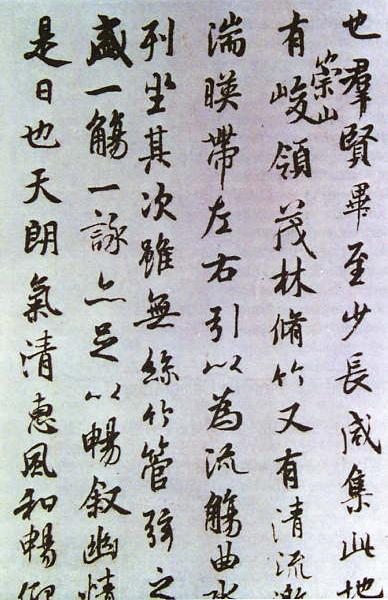| Art Q&A > Calligraphy |
|
|
Running Hand
Xingshu is a writing style looser than regular style. This style was created by Liu Desheng in the reigns of Emperors Huan and Ling of the Han Dynasty (206BC-220AD). At the very beginning, it was called Xingya, and later on became an independent form.
Xingshu is considered more abstract and artistic. Writing Xingshu characters is done more quickly than Kaishu but executed with no less care. Xingshu is not as messy as Caoshu, nor as neat as Kaishu. In general, it is convenient and highly practical for writing.
Masterpieces of Xingshu include Preface to the Orchid Pavilion Collection by Wang Xizhi, which was reputed as No.1 Xingshu Work. Unfortunately, the original was not handed down, and the one we see today is only a copy of the original work. Due to the high level of the copier, the copy retains the beautiful, neat style.
Famous Xingshu calligraphers included Cai Xiang, Su Dongpo, Huang Tingjian and Mi Fu in the Song Dynasty (960-1279), who were called Four Masters of the Song Dynasty. In the Ming (1368-1644)) and Qing (1644-1911) dynasties and modern times, many calligraphers good at Xingshu came into being. |
||||
All rights reserved. Reproduction of text for non-commercial purposes is permitted provided that both the source and author are acknowledged and a notifying email is sent to us. |
||||
 |
